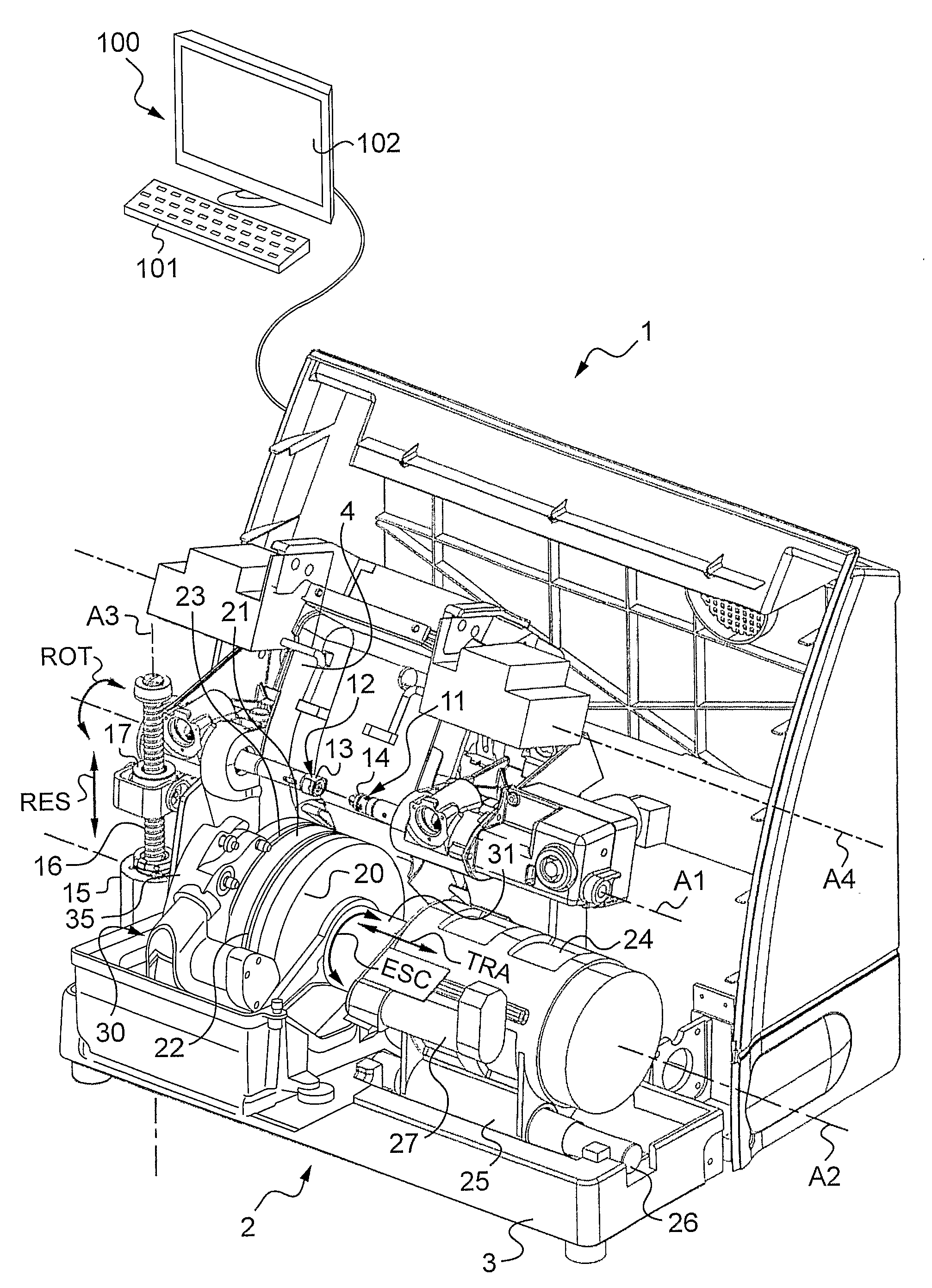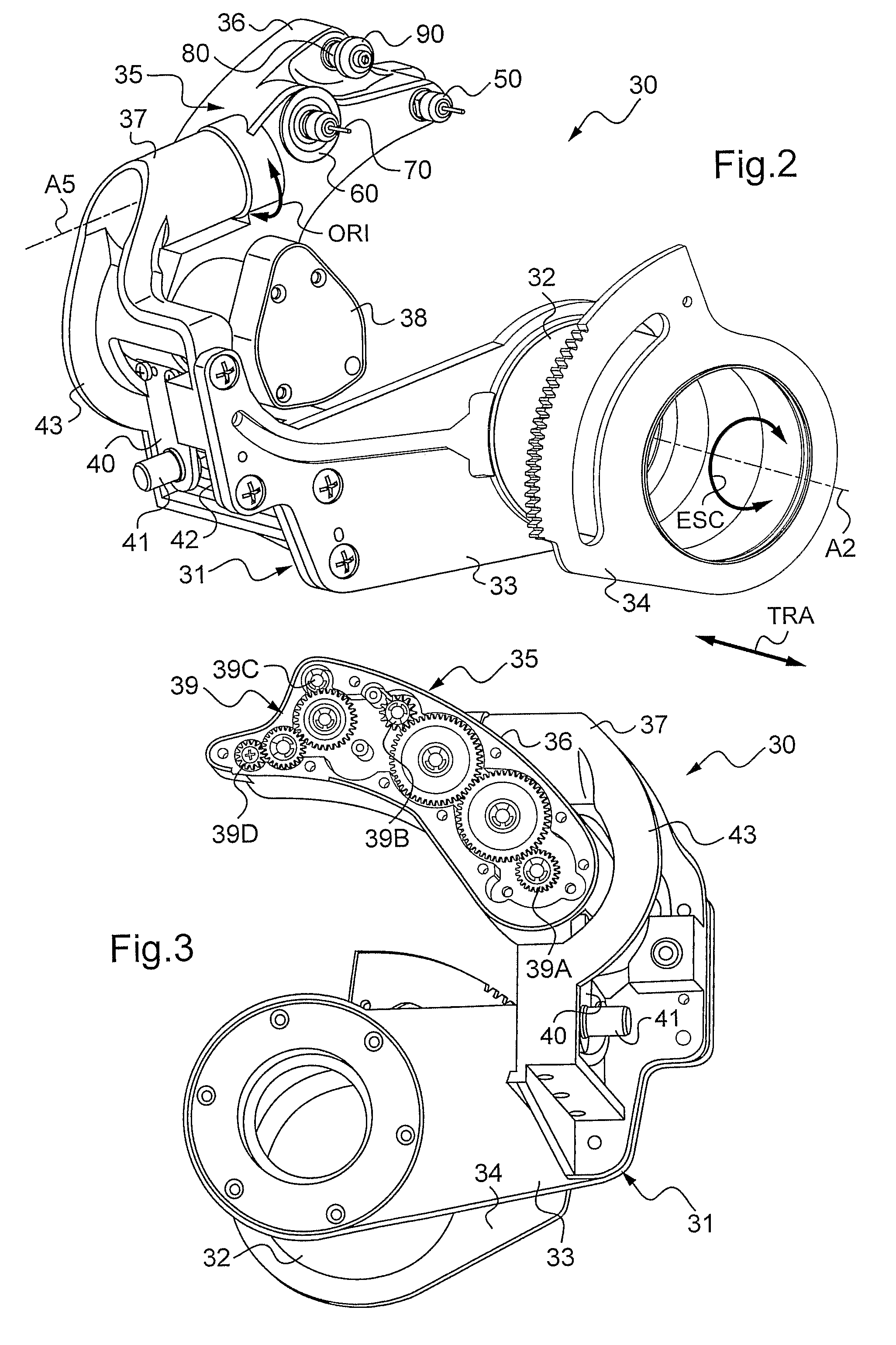Device for machining ophthalmic lenses, the device having a plurality of machining tools placed on a swivel module
- Summary
- Abstract
- Description
- Claims
- Application Information
AI Technical Summary
Benefits of technology
Problems solved by technology
Method used
Image
Examples
Embodiment Construction
[0041]The following description with reference to the accompanying drawings given by way of non-limiting example shows clearly what the invention consists in and how it can be reduced to practice.
[0042]In the accompanying drawings:
[0043]FIG. 1 is an overall perspective view of a machining device of the invention;
[0044]FIG. 2 is a detail perspective view of a machining arm of the FIG. 1 machining device;
[0045]FIG. 3 is a perspective view of the FIG. 2 machining arm seen from another angle;
[0046]FIG. 4 is a perspective view of the FIG. 2 machining arm including a machining module shown in an inclined position;
[0047]FIG. 5 is a perspective view of the retractable machining arm of FIG. 2 shown from another angle with means for adjusting the orientation of its machining module;
[0048]FIG. 6 is a perspective view of the FIG. 4 machining module seen from another angle;
[0049]FIG. 7 is a plan view of a finishing and polishing module of the machining module of FIG. 4; and
[0050]FIG. 8 is a sect...
PUM
| Property | Measurement | Unit |
|---|---|---|
| Diameter | aaaaa | aaaaa |
| Flexibility | aaaaa | aaaaa |
| Distance | aaaaa | aaaaa |
Abstract
Description
Claims
Application Information
 Login to View More
Login to View More - R&D
- Intellectual Property
- Life Sciences
- Materials
- Tech Scout
- Unparalleled Data Quality
- Higher Quality Content
- 60% Fewer Hallucinations
Browse by: Latest US Patents, China's latest patents, Technical Efficacy Thesaurus, Application Domain, Technology Topic, Popular Technical Reports.
© 2025 PatSnap. All rights reserved.Legal|Privacy policy|Modern Slavery Act Transparency Statement|Sitemap|About US| Contact US: help@patsnap.com



